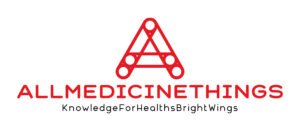Medical Mnemonics
- AMC
- Blog
- Career Guidelines
- Free Medical Books
- Healthcare Tips and Diseases
- Intensive care medicine
- Medical Mnemonics
- Membership/Fellowship of Royal College
- PLAB/UKMLA
- USMLE
- Video Lectures
In the complex world of medicine, where an extensive array of information must be mastered, medical mnemonics emerge as indispensable tools. A mnemonic is a memory aid designed to facilitate the recall of complex information by using a simple and often humorous acronym or phrase. In the medical field, these clever shortcuts have proven to be powerful allies in helping students, practitioners, and researchers remember crucial facts, diagnostic criteria, anatomical structures, and much more. This essay explores the significance of medical mnemonics in enhancing learning, improving retention, and fostering a deeper understanding of medical concepts.
The Cognitive Science Behind Mnemonics:
Mnemonics leverage cognitive processes such as visualization, pattern recognition, and association to make memorization easier. When we create and use a mnemonic, we transform abstract information into a format that our brain finds more memorable. The process of crafting a mnemonic itself helps to engage with the material at a deeper level, promoting comprehension and retention.
Benefits of Medical Mnemonics:
Enhanced Recall: Medical mnemonics enable the rapid retrieval of information that might otherwise be challenging to remember due to its complexity or volume. For instance, the mnemonic “BRAT” (Bananas, Rice, Applesauce, Toast) is used to remember the recommended diet for individuals with gastrointestinal distress.
Simplification: Mnemonics distill intricate information into concise and often amusing phrases. This simplification aids learners in grasping and organizing complex topics, such as the “Cranial Nerves” mnemonic “Oh Oh Oh, To Touch And Feel Very Green Vegetables, AH!” which helps remember the order of the cranial nerves.
Long-Term Retention: The use of mnemonics encourages the encoding of information into long-term memory, leading to improved retention even after the initial learning phase. Mnemonics provide a mental hook that facilitates retrieval when needed.
Speedy Diagnosis and Decision-Making: In the fast-paced medical environment, mnemonics allow practitioners to quickly access critical information, aiding in timely and accurate diagnoses. For example, “FAST” (Face, Arms, Speech, Time) is used to remember the signs of stroke.
Engagement and Fun: Mnemonics add an element of fun and creativity to the learning process. The challenge of creating or deciphering a mnemonic can make studying more enjoyable, leading to increased motivation and sustained interest.
Types of Medical Mnemonics:
Acronyms and Acrostics: These involve using the initial letters of words to create a memorable phrase or sentence. An example is “PEA” (Pulseless Electrical Activity) used in cardiac arrest scenarios.
Rhymes and Songs: Melodies and rhymes transform dry information into catchy tunes, making it easier to remember. The “Cranial Nerves Song” is a classic example.
Visual Mnemonics: Creating mental images or associating information with images helps enhance recall. The “Foramen Magnum” can be visualized as a “Magnum gun” for easy remembrance.
Chunking: Breaking down information into smaller, manageable chunks using acronyms or grouping helps in assimilation. “ABCDE” (Airway, Breathing, Circulation, Disability, Exposure) is used in emergency assessments.
Conclusion:
Medical mnemonics are more than just memory aids; they are cognitive tools that transform the learning experience in the medical field. By tapping into the brain’s natural processes for memory and association, mnemonics offer an efficient and engaging way to master complex information. As medical practitioners, students, and educators continue to harness the power of mnemonics, they unlock the potential for improved understanding, faster decision-making, and more effective communication in the ever-evolving landscape of medicine.


![Most Entertaining Pharmacology Mnemonics [2023]](https://allmedicinethings.com/wp-content/uploads/2023/08/Pharmacology-Mnemonics-1-324x160.jpg)
